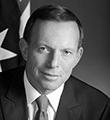Australia and India have always been comfortable in each other’s presence. We share a democratic heritage, the same language and have stood side by side through the global conflicts of the last century.
Surprisingly, despite the deep ties that bind, we are not as close as we should be. My visit to India reflects Australia’s desire for India to be in the first rank of Australia’s relations.
India is also a democratic superpower and we are bound together by strongly convergent interests.
We are both countries situated in the most dynamic region on the planet, where the centre of economic and strategic gravity is shifting to the Indo-Pacific.
India is at the heart of this extraordinary change. I first visited India as a 23 year-old and spent time travelling around this amazing country: through Mumbai, Rajasthan, Delhi, Kashmir and then Bihar.
The nation I saw then has been transformed.
India has lifted hundreds of millions into the middle class, creating new opportunities, better lives and expanding horizons for countless people. This is an inspiration to the world.
Prime Minister Modi won a powerful mandate this year to build on this record of achievement. At its core is a focus on economic growth, jobs and skills.
I know what he means because this is my focus for Australia. That is why I say “Australia is open for business” and Prime Minister Modi says “Come. Make in India”.
As Chair of the G20 this year, I have made economic growth and growth creation the key themes of our deliberations and efforts.
International trade and investment enriches our people and helps build our nations. Australia and India have seen this across almost every field of economic endeavour.
Australian resources like coal, LNG and uranium will help provide India’s energy security for decades to come.
Our resources are fuelling India’s prosperity, just as India buying our resources and investing in our resources sector is supporting Australian growth and jobs. This is why I was particularly pleased by my Government’s recent approval of the Adani Group’s development of the Carmichael coal deposit in Queensland. This mine will be one of the largest in the world.
One of the highest priorities of any government is to provide accessible and quality education. Australia and India have decades of cooperation in supporting stronger education for our people. Half of Australia’s universities have a presence in India. Last year, 36,000 Indian students came to study in Australia, with a 15 per cent rise in applications this year.
Our skills providers are active in India, working to help meet Prime Minister Modi’s focus on vocational skills training for hundreds of millions of young Indians. I am committed to strengthening this positive trajectory.
We cannot forget that so many Indian and Australian livelihoods remain in farming, and that food security remains a pressing concern for India.
Australia’s world-class agricultural sector can support India all the way from better crop and herd productivity to storage and transport, cold chain supply, food-processing and retail.
Mr Modi and I both refer to ourselves as Prime Ministers for infrastructure. My government will spend tens of billions to expand Australia’s economic horizons. Similar spending is to occur in India.
From construction companies to city and system design, green technologies and financing, this presents our companies with significant opportunities in each other’s countries. With the third largest funds under management in the world, Australia can become a financing powerhouse for India.
Opportunities also exist in health, IT, biotech and other sectors. It has never been a better time for bilateral trade and investment. India is already Australia’s fifth largest export market. I aim to improve on this, for both sides.
As we are all aware, the shift of economic weight to the Indo-Pacific region is accompanied by strategic change. Here too, on strategic and security matters, Australian and Indian interests are converging as never before. Namely, to protect and promote the stability and prosperity of the Indo-Pacific.
I pay tribute to India’s leadership in this in the Indian Ocean, and to India’s strengthening “Look East” policy as evident in Prime Minister Modi’s successful visit to Japan.
In this endeavour we are not alone. Australia and India have shared interests in continued US engagement in the region, just as we both do in a China that makes a positive contribution to stability and prosperity in the Indo-Pacific.
As our partnership grows because of this new strategic dynamic, so will our security and defence cooperation – which is why I am pleased by our agreement for regular navy to navy exercises given the growing importance of the maritime sphere.
Ultimately, what all relationships amount to is how our people interact with one another. Over 400,000 people of Indian heritage now live in Australia and India is our largest source of migrants. Last year nearly 200,000 Indians visited Australia and a similar number of Australians went to India. We welcome tens of thousands of Indian students and will send more Australians your way.
It is the bonds of our people that will bring us closer than ever and it is these bonds that I will celebrate and encourage during my visit.
5 September 2014
Source: The Hindu

